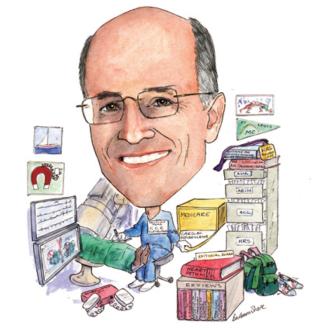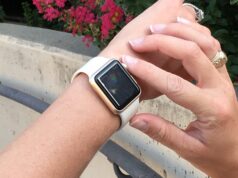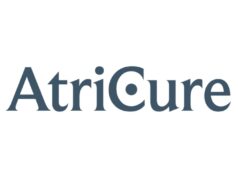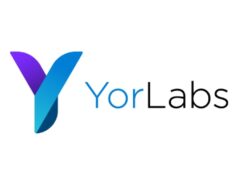Bruce Lindsay, immediate past-president of the Heart Rhythm Society, speaks to Cardiac Rhythm News about the highlights of his presidency and where he thinks the future of electrophysiology lies.
Who or what have been the greatest influences on your career?
Probably the biggest influence was the training I got in cardiology at Washington University, and the two mentors who affected me the most were Bert Sobel and Michael Cain. Bert Sobel was the director of cardiology when I was accepted into the programme and did my fellowship, and when I ended up joining the faculty at Washington, he served as a mentor in that capacity. Michael Cain, at the time I did my fellowship, was director of the cardiac electrophysiology program, which was the field I ultimately went into, and so I trained under him. Early in my career he was a strong mentor for me as I was getting started doing clinical cases, clinical research and writing manuscripts. He certainly had an important influence on me as I developed.
What were the highlights of your presidency of the Heart Rhythm Society?
On a personal level, it is a unique experience to work with a lot of very talented physicians and staff at the HRS, and it has been rewarding to be able to put together a strong scientific programme for the annual meeting. It is challenging sometimes to deal with problems that crop up that you don’t anticipate, such as the lead recall this year, but as an organisation we responded very quickly and put together a webcast and other guidance for our members.
We have also been working on some documents to provide guidance for the role of industry-employed allied professionals. They help a great deal in the care of patients but there have to be certain guidelines and regulations so that they are not doing things that are inappropriate. We worked with industry to develop these guidelines, which will be coming out before too long. There are a couple of other guidelines that came out this year: the guidelines for pacemakers and defibrillators developed collaboratively with the American College of Cardiology and the American Heart Association. Also the document on remote monitoring, which I think will be important for the future. Those were important documents for our organisation.
How do you see the future of electrophysiology?
Electrophysiology is a growing field. It is growing in terms of its complexity, the type of work we do, the volume of procedures we do and, looking at the manpower demands, electrophysiologists are in great demand and I think will continue to be busy over the next decade because we have an ageing population that is prone to heart rhythm difficulty.
In our area, probably the greatest activity is occurring in ablation procedures. The most difficult to ablate are atrial fibrillation and some of the ventricular arrhythmias, and in order to do that successfully there are many technologies that aid these procedures, some of them having to do with imaging. There are several technologies out for getting a 3D image of the heart and there are several ways of creating a CT scan of the heart in the lab that gives additional information. There are technologies that allow us to manoeuvre catheters remotely, either through a mechanical robotic system or through magnetic navigation. I’ve been involved with the development of a magnetic navigation system with a large magnet that can be controlled by a computer, a small magnet at the tip of the catheter and a magnetic field to steer the catheter around the heart. These kinds of technologies would potentially make it easier to do complex cases. Especially combined with the new 3D imaging system, it allows us to navigate around the heart and move the catheters with greater precision and to take on more difficult cases than we have in the past.
Are you a gadget person?
I use technology but I can’t say that I’m a gadget person. If they work well then I’m happy with them if they don’t then I don’t enjoy messing around with them.
Can you remember a particularly interesting case you have treated?
There are always interesting cases and it is hard to pick one in particular, but what I do remember as interesting was patient who had developed atrial flutter. He had a prior lung transplant and the electrical circuit supporting the atrial flutter was around the connection of his transplanted pulmonary veins to his heart. From a physiologic point of view that was an interesting case for us to do, and we were able to successfully ablate that.
What areas of research are you most interest in?
There have been a number of things I’ve worked on over the years. Early in my career I was interested in some of the technologies that would potentially improve identification of patients who are at risk of sudden death. That continues to be of interest, although it has moved slowly. Another area I worked on early on was looking at the feasibility of a new generation of defibrillators that you could put the leads in just like a pacemaker lead as opposed to opening up the chest. There were a number of people working in that area. We do that as a routine now but it wasn’t routine in 1980. Then I became involved with ablation procedures early on and that’s what got me interested in the concept of magnetic navigation.
Stereotaxis was very small, a start-up company at that point and they were working in the area of neurosurgery to guide surgical implements to target the brain. The idea was that you didn’t have to go in a straight line you could curve around critical structures, and they wondered whether it was feasible to do this in the heart, whether that would have any application. It seemed to me that for complex ablation procedures if we could accurately steer a catheter around the heart it would make it easier to do these procedures and it has some advantage to physicians in that it is less wear and tear on us: we can sit, as opposed to standing all day long. So that project started about ten years ago and it is now commercially available and has made a great deal of progress.
What are your hobbies and interests outside of medicine?
I’ve enjoyed running and I generally like to exercise. Many years ago I liked to sail; I’d like to get back to that although I can’t say I’ve done it recently.
What advice would you give to a student starting out in cardiovascular medicine today?
The changes in my field have been dramatic: what I do today is very different from what I was originally trained to do. Each year there are new things that we learn to adapt our techniques or insights into how to treat patients. I think for people going into medicine, this is true across the entire spectrum of medicine, it certainly is true of cardiology, and perhaps even more so in electrophysiology. Medicine is an ever-changing field, there are constantly advances being made so you never stop studying, you always have to keep abreast of work that people are doing and trying to improve the techniques that you do. There are some jobs where people take a job and do the job the same way for 15–20 years. That’s never true in medicine. People always need to be thinking that each year it’s going to be a little bit different.
Fact file
Born
September 16, 1951
Undergraduate
1969–1973 – BS, Honours, Eckerd College, St. Petersburg, FL
Graduate
1973–1977 – MD, Jefferson Medical College, Philadelphia, PA
Postgraduate
1977–1978 – Intern in Medicine, University of Michigan, Ann Arbor, MI
1978–1980 – Resident in Medicine, University of Michigan, Ann Arbor, MI
1980–1983 – National Health Service Corps, Medical Director, East Jordan, MI
1983–1985 – Clinical Cardiology Fellow, Cardiology Division, Washington, University School of Medicine, St. Louis, MO
1986 – Visiting Pacemaker Fellow, Newark Beth Israel, Hospital, Newark, NJ
Academic positions
1985–1987 – Instructor in Medicine, Cardiology Division, Washington University School of Medicine, St. Louis, MO
1987–1991 – Assistant Professor of Medicine, Cardiology Division, Washington University School of Medicine, St. Louis, MO
1992–2005 – Associate Professor of Medicine, Cardiology Division, Washington University School of Medicine, St. Louis, MO
2006–2008 – Professor of Medicine, Cardiology Division, Washington University School of Medicine, St. Louis, MO
2008–present – Section Head, Clinical Cardiac Electrophysiology
University and Hospital Appointments
1980–1983 – Charlevoix Area Hospital
1982–1983 – Professional Activities Committee
1985–Present – Attending Physician, Barnes-Jewish Hospital, St. Louis, MO
1989–1994 – Associate Director of Clinical Cardiac Electrophysiology
1992 Expenditure Authorization Committee
1994 – 2008 Director of Clinical Cardiac Electrophysiology Barnes-Jewish, Hospital/Washington University School of Medicine
2008 Section Head, Clinical Cardiac Electrophysiology, Cleveland, Clinic Foundation
Selected honours and awards
2000–2003 – Executive Committee, ACC
2001–2002 – Chair, Board of Governors, ACC
2003–2008 – Board of Trustees, ACC
2003–present – Executive Committee, NASPE
2003–present – Chair, Health Policy Committee, NASPE-Heart Rhythm Society
2003–2004 & 2006–2009 – ABIM Test Writing Committee, ABIM Test writing Committee
2005–2006 – Vice President and Program Chair for Scientific Sessions, Heart Rhythm Society
2007–2008 – President, Heart Rhythm Society
Editorial
Reviewer: Circulation, American Journal of Cardiology, Journal of the American, College of Cardiology, Heart Rhythm, Annals of Internal Medicine, Annals of Thoracic Surgery, Mayo Clinic Proceedings, Journal of Clinical Electrophysiology
Editorial Board: Heart Rhythm
Selected invited lectures
2007 – European Cardiac Arrhythmia Society. Marseille, France. ‘Difficulties and complications associated with ICD implantation’
2007 – European Heart Rhythm Association, Europace, Lisbon, Portugal. ‘Robotic and Magnetic Navigation’
2007 – European Society of Cardiology, Vienna, Austria. ‘Guidelines for Implantation of ICDs in the United States’
2007 – 10th International Workshop on Cardiac Arrhythmias, Venice, Italy. ‘Standards for training and personnel for ablation of atrial fibrillation’
2008 – Challenging Cases. ‘Indications for Pacemakers During Acute Myocardial Infarction’
2008 – Heart Rhythm Society: ‘Magnetic and Robotic Navigation; Risks Associated with Device Failure’
2008 – European Atrial Fibrillation Summit: ‘Anticoagulation after Ablation of Atrial Fibrillation’










